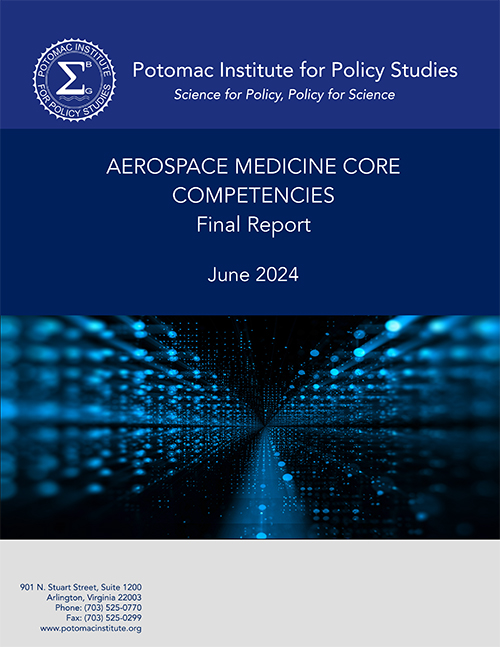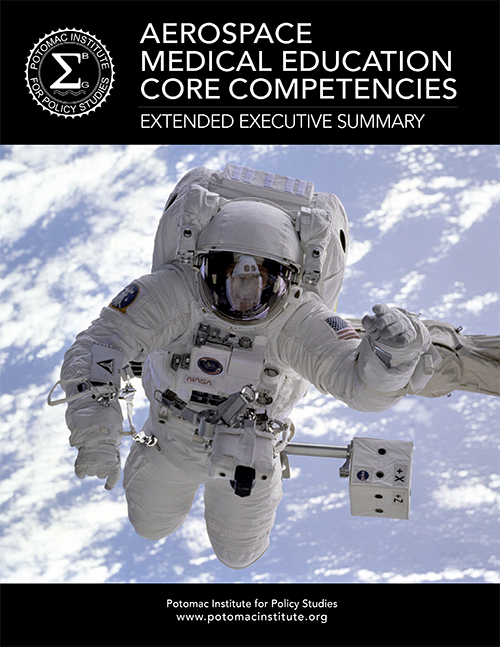Aerospace medicine has existed as a medical specialty since the early 1900s and originated alongside the development of the aviation industry. According to the Aerospace Medicine Association, aerospace medicine involves determining and maintaining the health, safety, and performance of humans involved in air and space travel. This encompasses both aviation medicine (i.e., involving airplane pilots and air flight) and space medicine (i.e., involving astronauts and spaceflight). Flight surgeons can be broadly defined as expert aerospace medicine providers, and individual organizations may use the term differently. For the purposes of this report, we have used the terms “aerospace medicine practitioner” or “aerospace medicine provider” to refer to individuals who are trained in aerospace medicine and provide medical care to aviators, astronauts, or other spaceflight participants.
Historically, space medicine was combined with aviation medicine in part because few space medicine physicians were required for the limited number of human spaceflight missions from the National Aeronautics and Space Administration (NASA) and a handful of other government space agencies. Today, the reinvigoration of NASA’s space campaign with the Artemis Program, the recent boom in commercial spaceflight companies, the establishment of the United States Space Force (USSF), and increasing involvement from other nations are rapidly expanding the astronaut workforce and participation in human spaceflight. However, many aerospace medicine providers will point out that getting to the space environment requires passing through the air environment, and many of the concerns of aviation medicine also apply to space medicine. As such, separating out these two types into separate medical domains is not entirely sensible.
Similarities between aviation medicine and space medicine are due in part to the fact that many of the hazardous and/or unusual elements in the aviation environment are also present in the space environment. For example, isolation and enclosure are factors that can affect both physical and mental health of both astronauts and pilots. Similarly, both astronauts and aviators are exposed to extended periods of vibration and noise; astronauts on the International Space Station (ISS) are exposed to this for a more extended period of time, but the change is a matter of degree, not of essential difference. Radiation exposure is present in both the aviation and space environments, although to a greater extent in the space environment. Conversely, the main factor that characterizes the space environment but not the aviation environment is microgravity.
Aerospace medicine providers working in space medicine are responsible for many aspects of patient care throughout the mission duration. At NASA, care begins when aerospace medicine providers conduct comprehensive medical evaluations as part of the astronaut selection campaign. This entails screening astronaut candidates for their general health status and evaluating them for any disqualifying medical conditions. As our knowledge of the impacts of the aerospace environment on human physiology evolves, these medical standards are evaluated and adjusted. NASA is currently in such an evaluation process and is soliciting public comments to revise the current astronaut medical standards, requirements, and clinical procedures used to medically evaluate astronauts.
Following astronaut selection and certification, NASA aerospace medicine providers become the primary care physicians for the astronaut team members. They provide care and support through training, launch, flight, and landing, and continue with longitudinal care throughout the astronauts’ lifespans. These aspects are unique to aerospace medicine compared to other medical specialties. Aerospace medicine providers need to possess a wide range of medical knowledge to inform care throughout each astronaut’s mission and lifespan. Each phase brings unique risks and physiological changes that the provider should be able to recognize, diagnose, and treat.


